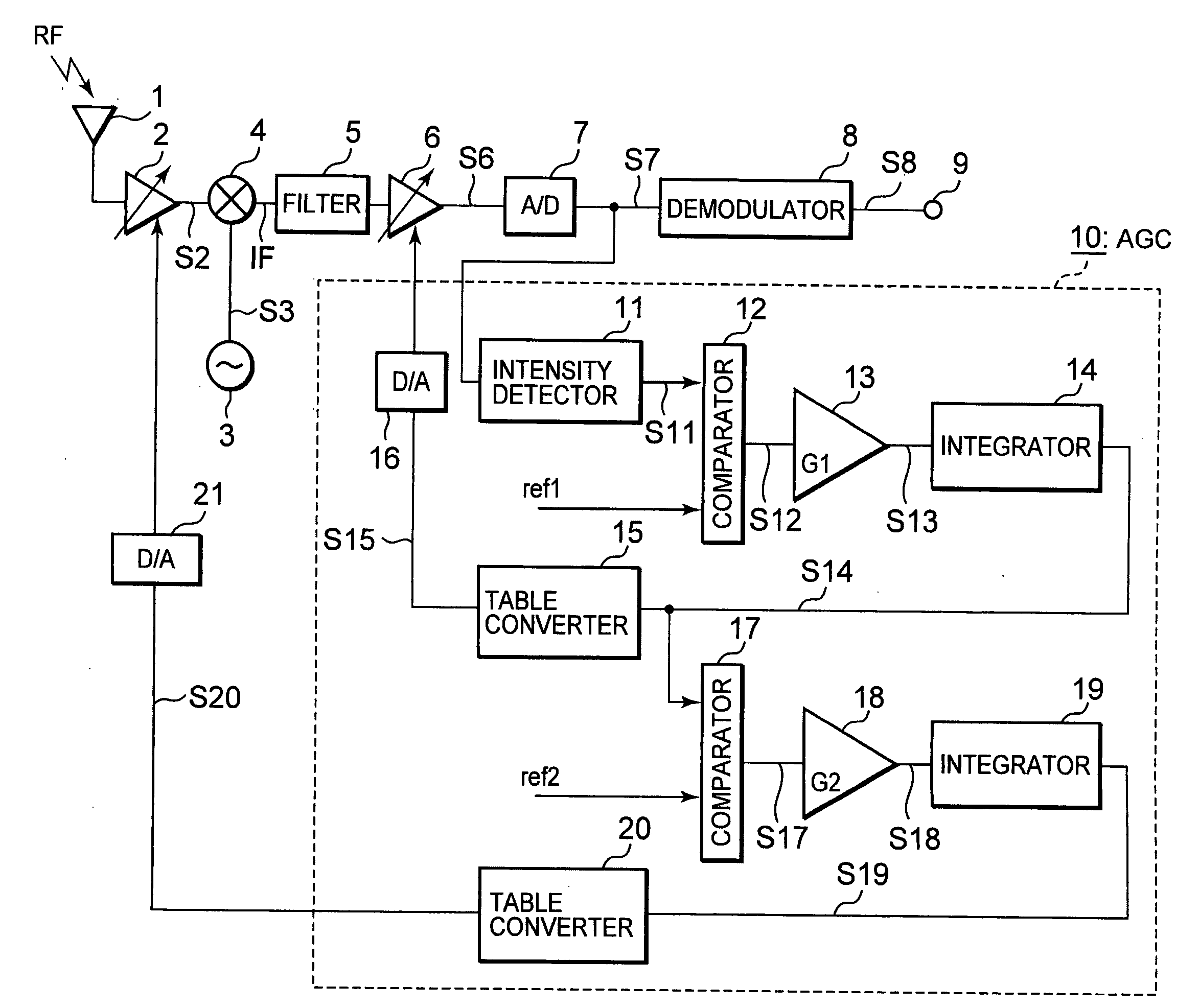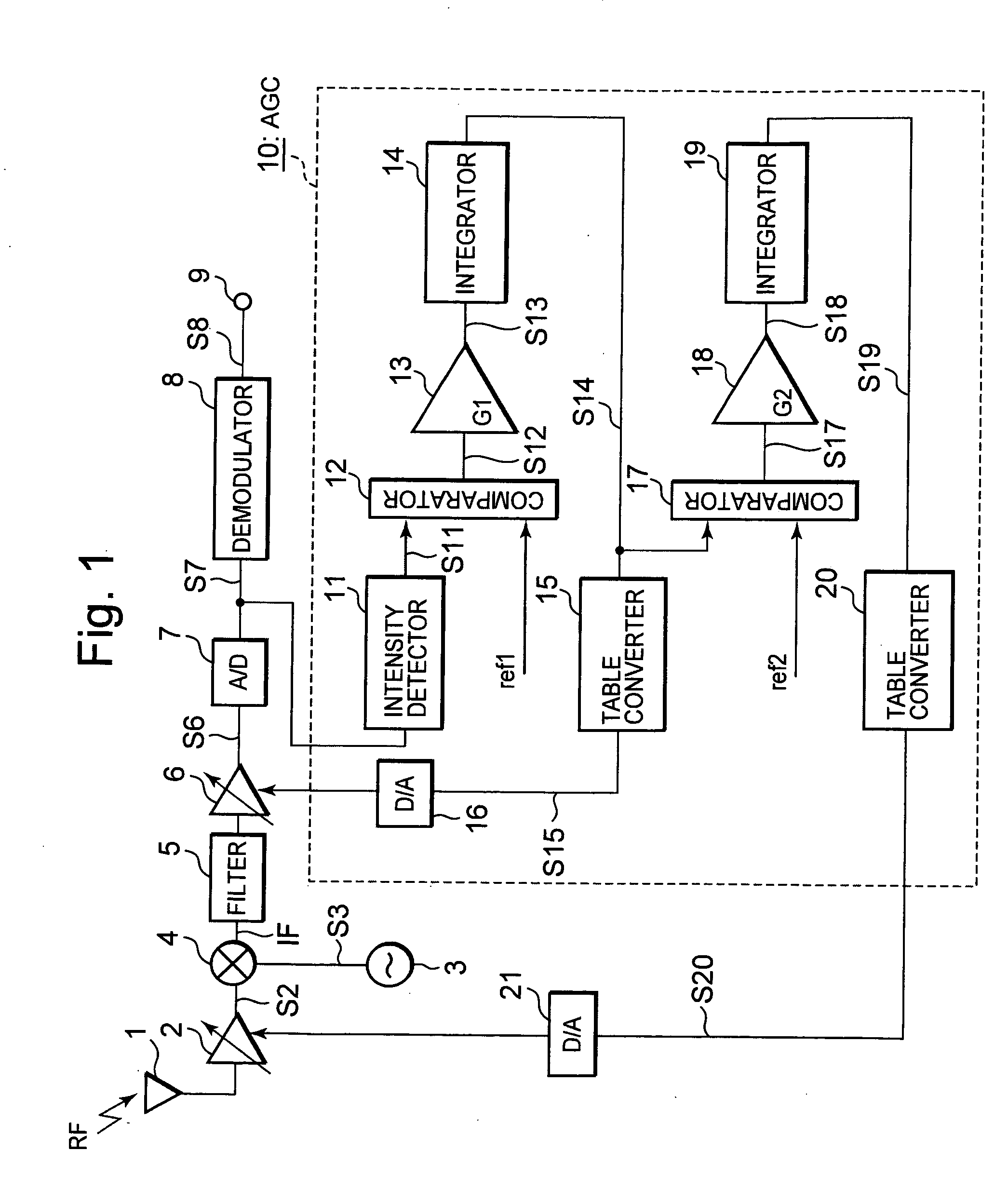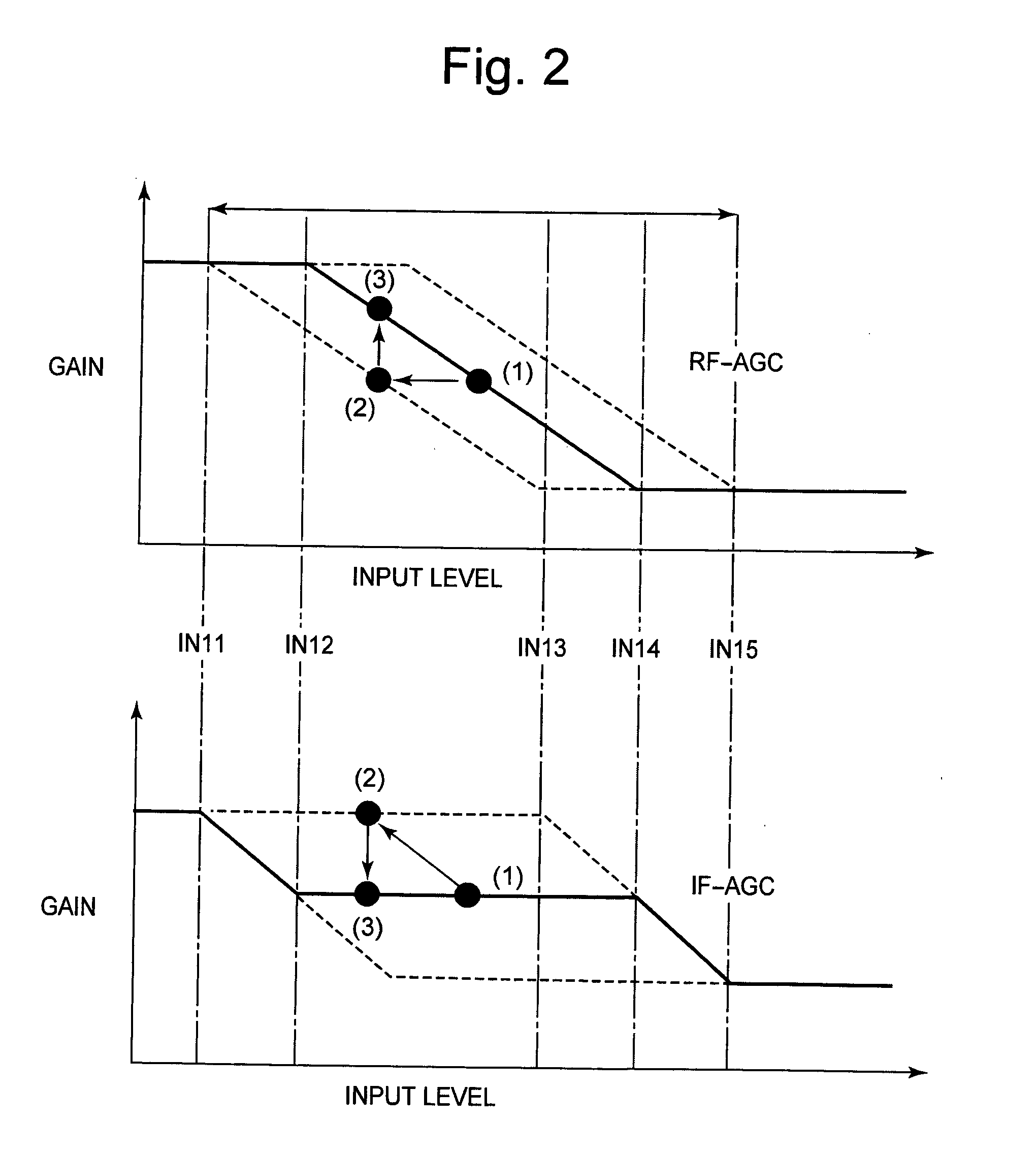Radio frequency receiving apparatus, radio frequency receiving method, LSI for radio frequency signal and LSI for base band signal
a radio frequency and receiving device technology, applied in the direction of amplifiers with semiconductor devices/discharge tubes, gain control, transmission, etc., can solve the problems of deteriorating the received signal and line quality, unable to perform proper gain control, and unable to achieve the maximum gain of the re variable gain amp
- Summary
- Abstract
- Description
- Claims
- Application Information
AI Technical Summary
Benefits of technology
Problems solved by technology
Method used
Image
Examples
first embodiment
[0024]FIG. 1 is a schematic view showing a configuration of a receiving apparatus according to the present invention. The receiving apparatus, which is configured by large scale integration (LSI) or the like, includes an antenna 1 that receives an RF signal such as a terrestrial digital broadcasting wave or the like, an RF variable gain Amp 2 connected to the antenna 1, a local oscillator 3 that outputs a local oscillating signal S3 having a predetermined frequency, and a mixer 4 connected to outputs of RF variable gain Amp 2 and local oscillator 3. Local oscillator 3 and mixer 4 together form a conversion circuit. RF variable gain Amp 2, which is for example configured by an LNA, amplifies the RF signal received by antenna I based on gain set by gain control signal S19 fed back from AGC circuit 10, and outputs an output signal S2 to mixer 4. Mixer 4 mixes the output signal S2 with local oscillating signal S3 and outputs an IF signal, which is provided to IF variable gain Amp 6 via ...
second embodiment
[0042] since the response speed of the gain control (RF-AGC) for RF variable gain Amp 2 is varied depending on the moving speed of the mobile receiver, it is possible to achieve proper gain control according to the moving speed of the mobile receiver, thereby improving reliability of the moving receiver.
[0043]The present invention is not limited to the above described embodiments. For example, other different uses and modifications are possible, such as excluding filter 5 from the receiving apparatus, adding the functions of different circuits, and changing the configuration of AGC circuits 10 and 10A, and changing the receiving method according to such change. These modifications can be made to the embodiments described above will still falling within the scope of the appended claims.
PUM
 Login to View More
Login to View More Abstract
Description
Claims
Application Information
 Login to View More
Login to View More - R&D
- Intellectual Property
- Life Sciences
- Materials
- Tech Scout
- Unparalleled Data Quality
- Higher Quality Content
- 60% Fewer Hallucinations
Browse by: Latest US Patents, China's latest patents, Technical Efficacy Thesaurus, Application Domain, Technology Topic, Popular Technical Reports.
© 2025 PatSnap. All rights reserved.Legal|Privacy policy|Modern Slavery Act Transparency Statement|Sitemap|About US| Contact US: help@patsnap.com



